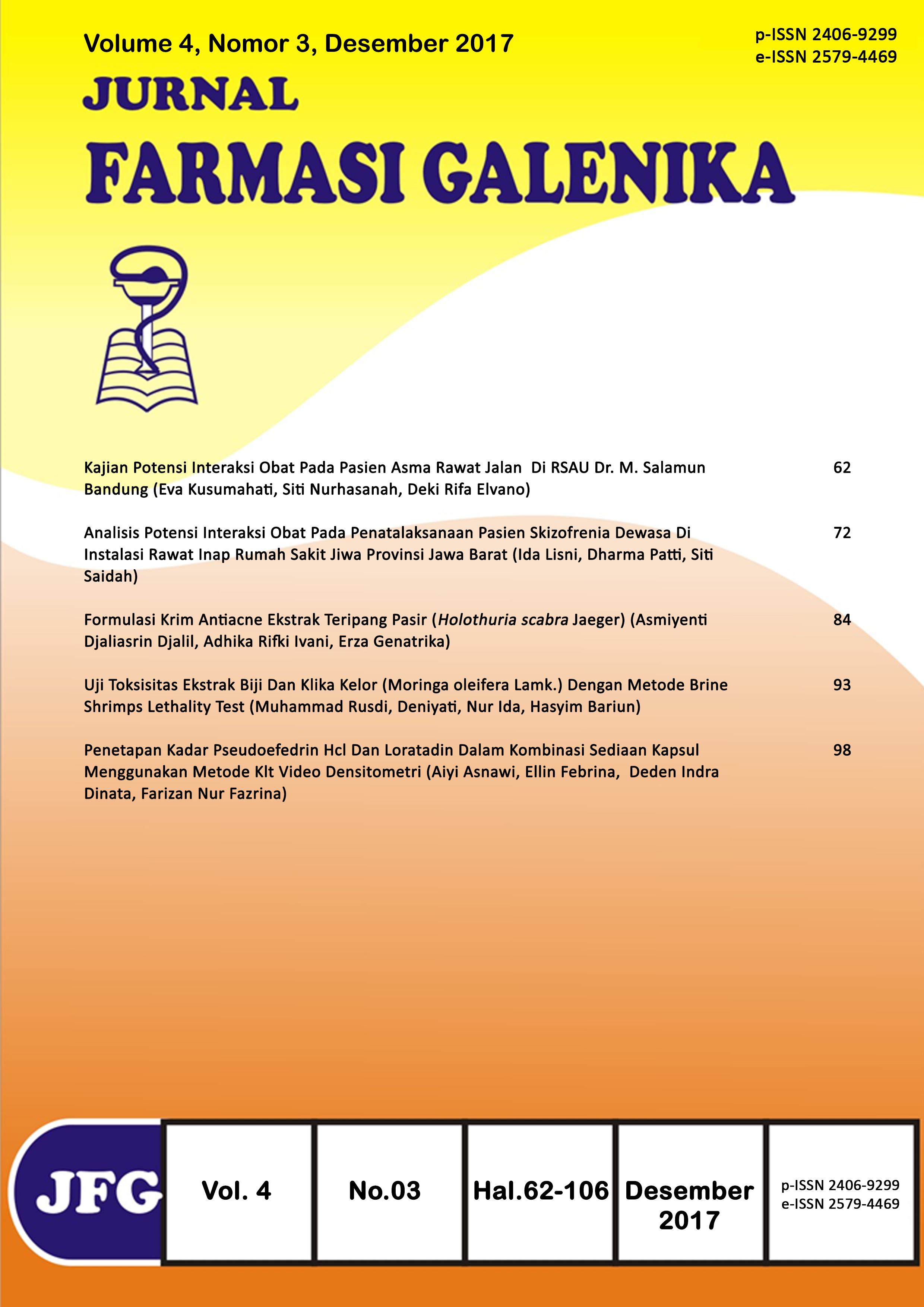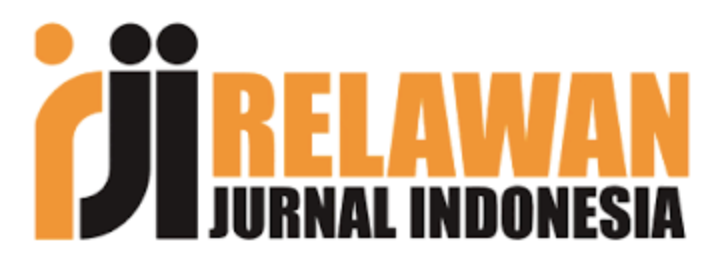ANALISIS POTENSI INTERAKSI OBAT PADA PENATALAKSANAAN PASIEN SKIZOFRENIA DEWASA DI INSTALASI RAWAT INAP RUMAH SAKIT JIWA PROVINSI JAWA BARAT
Keywords:
interaksi obat, skizofrenia, Rumah Sakit Jiwa Provinsi Jawa BaratAbstract
Skizofrenia merupakan salah satu penyakit gangguan jiwa berat. Gejala yang ditimbulkan seperti delusi atau halusinasi. Penelitian ini bertujuan untuk mengetahui potensi interaksi obat antipsikotik yang terjadi pada pasien skizofrenia dewasa di instalasi rawat inap Rumah Sakit Jiwa Provinsi Jawa Barat periode Oktober sampai Desember tahun 2016. Penelitian ini merupakan penelitian observasional dengan rancangan analisis deskriptif dan pengambilan data secara retrospekstif. Penelitian dilakukan dengan menganalisis data rekam medik pasien. Sampel pasien skizofrenia dewasa rawat inap yang didapatkan kemudian diseleksi dengan kriteria inklusi sehingga didapatkan 118 sampel pasien yang memenuhi kriteria dan terdapat 391 potensi interaksi obat. Obat antipsikotik yang banyak digunakan adalah haloperidol sebanyak 77 pasien (65,25%), klorpromazin 67 pasien (56,78%) dan risperidon sebanyak 65 pasien (55,08%). Berdasarkan mekanismenya, terdapat interaksi farmakodinamik sebanyak 288 kasus (73,66%), interaksi farmakokinetik sebanyak 29 kasus (7,42%) dan tidak diketahui sebanyak 74 kasus (18,92%). Berdasarkan tingkat keparahannya didapatkan kategori mayor sebanyak 111 kasus (28,39%), moderat 275 kasus (70,33%) dan minor sebanyak 5 kasus (1,28%). Selain itu berdasarkan tingkat signifikansinya diperoleh tingkat signifikansi empat merupakan terbanyak yaitu 233 kasus (59,59%).
Downloads
References
Drugs,(2017):Drug_Interaction_Checker,https://www.drugs.com/drug_interactions.php.
Elin, Y.S., Retnosari, A., Joseph, I.S., I Ketut A., Adji, A.P.S., Kusnandar. (2014) : ISO Farmakoterapi, ISFI Penerbitan, Jakarta.
Ikawati, Zullies., (2011) : Farmakoterapi Penyakit Sistem Saraf Pusat, Bursa Ilmu, Yogyakarta.
Medscape,(2017):Drug_Interaction_Checker,Online.http://reference.medscape.com/drug-interactionchecker.
Setiawati,A., Zunilda, S.B., dan Setiabudy,R.,(2002): Pengantar farmakologi. Farmakol dan Ter. Fak,Kedokteran univ. Indonesia, Jakarta.
Soejono, S., (2000) : Kamus Besar Psikologi, Rajawali, Jakarta.
Sylvia, D.E., dan Hadisukanto, G., (2015) : Buku Ajar Psikiatri edisi kedua, Fakultas Kedokteran Universitas Indonesia, Jakarta.
Tatro, D.S., (2014): Drug Interactions Facts Edition 5, California.
Tjay, Tan Hoan., dan Rahardja.,K., (2015) : Obat – Obat Penting, Elex media komputindo, Jakarta.
Wijono,R., M.W.,Nasrun, C.E., Damping., (2013) : Gambaran dan Karakteristik Penggunaan Triheksifenidil pada Pasien yang Mendapat Terapi Antipsikotik, Departemen Psikiatri, Fakultas Kedokteran Universitas Indonesia, Rumah Sakit Cipto Mangunkusumo ,Jakarta.
Downloads
Published
How to Cite
Issue
Section
Citation Check
License
Authors who publish in Jurnal Farmasi Galenika agree to the following terms:
This license enables reusers to distribute, remix, adapt, and build upon the material in any medium or format, so long as attribution is given to the creator. The license allows for commercial use. CC BY includes the following elements:
BY: credit must be given to the creator.
You are free to:
- Share — copy and redistribute the material in any medium or format for any purpose, even commercially.
- Adapt — remix, transform, and build upon the material for any purpose, even commercially.
- The licensor cannot revoke these freedoms as long as you follow the license terms.
Under the following terms:
- Attribution — You must give appropriate credit , provide a link to the license, and indicate if changes were made . You may do so in any reasonable manner, but not in any way that suggests the licensor endorses you or your use.
- No additional restrictions — You may not apply legal terms or technological measures that legally restrict others from doing anything the license permits.
Notices:
You do not have to comply with the license for elements of the material in the public domain or where your use is permitted by an applicable exception or limitation .
No warranties are given. The license may not give you all of the permissions necessary for your intended use. For example, other rights such as publicity, privacy, or moral rights may limit how you use the material.











